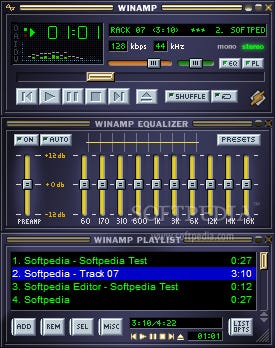Farewall to the Desktop As a Platform
I grew up with desktop applications. I did word-processing in WordPerfect and then Word. I managed my data in Windows Explorer. I listened to music in Winamp:
… or Sonique:
I watched videos in Windows Media Player:
I did email in Thunderbird:
All the computing revolutions of the era — the GUI, multimedia, MP3, email — were enabled by desktop apps. I lived, breathed and loved desktop apps. They were the Mecca, the Medina.
Then the web happened. Apps moved to the web 1. New ideas were tried on the web.
A decade back, all new Win32 (which is the Windows API) app development stopped. Other than line of business apps, which I don’t care about, no new innovation was happening on Win32. Every startup would build mobile and web apps. When I suggested a native desktop app, they’d think I was referring to mobile, since that was the only kind of native app that was in their headspace. When they finally understood what I was saying, they’d look at me weirdly, as if I’d suggested building an MS-DOS app.
And that’s the death of a platform. If no new major innovation is happening on a platform, it’s continuing only on the basis of inertia, like a firework rocket that has exhausted its fuel and it still going up, but only for a while, after which it will invariably fall to zero. Windows as an app platform died a decade back2.
The Mac as an app platform survived longer, thanks to Apple investing in native apps for Notes, Reminders, Mail, Calendar and a bunch of things:
Most of these were web apps on Windows, but Apple believed in desktop apps, and invested in polished ones. Desktop apps like Notes are superior to web apps in multiple ways: I can open them quicker with Spotlight: Cmd-Space No<enter>. I can search for content in the app in Spotlight. With web apps, I often don’t find the information I need when I need it because it’s siloed in different apps like Google Keep, Notion, Google Docs, Microsoft, Basecamp, and more. I don’t know which app to search in. With desktop apps, all data is centralized into Spotlight or Cortana to search locally. Native apps invariably work offline, while web apps don’t. Native apps plug into the OS’s sharing menu. And so on. I agreed with and cheered Apple’s decision to invest in high-quality Mac apps for things that would be web apps on Windows. Inspired by Apple, the Mac has had high-quality third-party apps, and subscription services like Setapp that gave you access to handpicked high-quality Mac apps for $9/month.
While the world as a whole had moved on, we the desktop app believers continued to fight the good fight.
Unfortunately, in the last few years, even our leader, Apple, gave up. They started building iOS-like Mac apps, and even created frameworks like Catalyst to ease the process. Apple concluded that the Mac as an app platform is dead, like the Windows app platform died a decade ago.
We’ve reached the dark future. Desktop users now have to settle for web apps, Electron apps or iOS apps running on the Mac.
I feel about desktop apps the way we feel about our childhood home. We have better homes today but our childhood home helped us get to where we are today, and we have only fond feelings for it. Farewall, desktop as a platform. You’ll be missed.
Other than sophisticated apps like an IDE or Lightroom.
That doesn’t mean I don’t use Windows, just that most of the apps I use are web apps.








